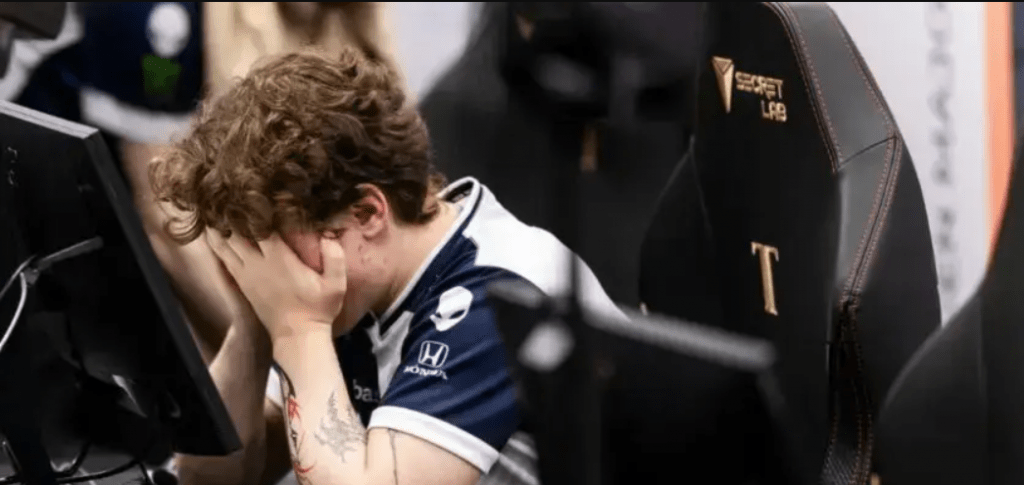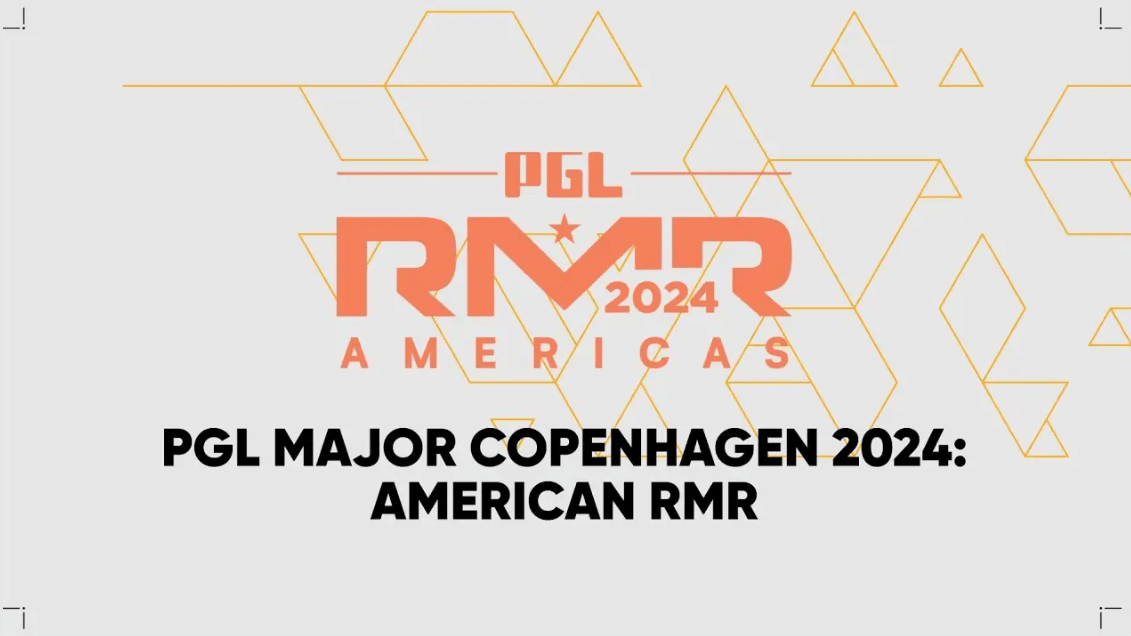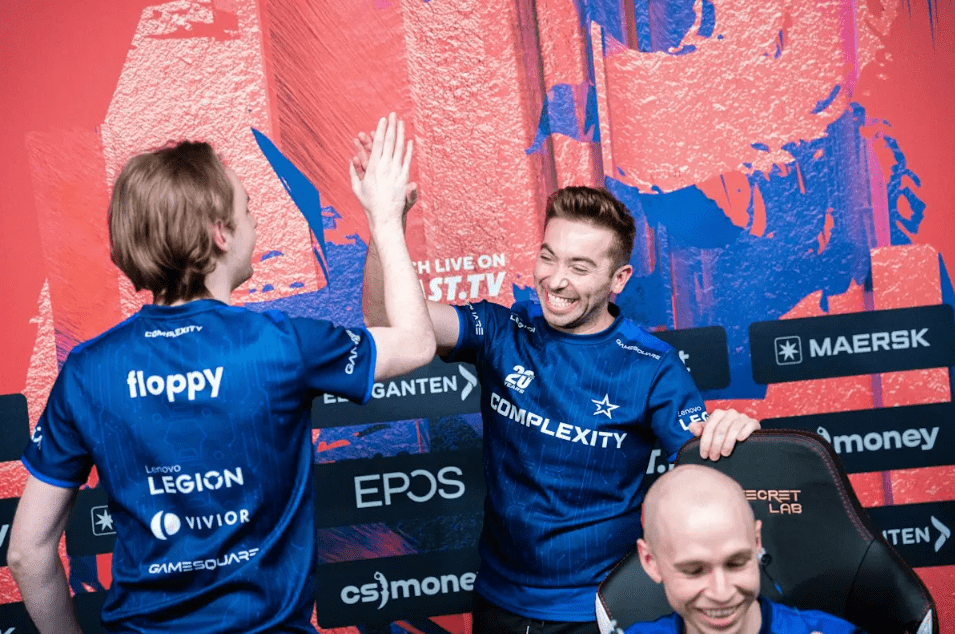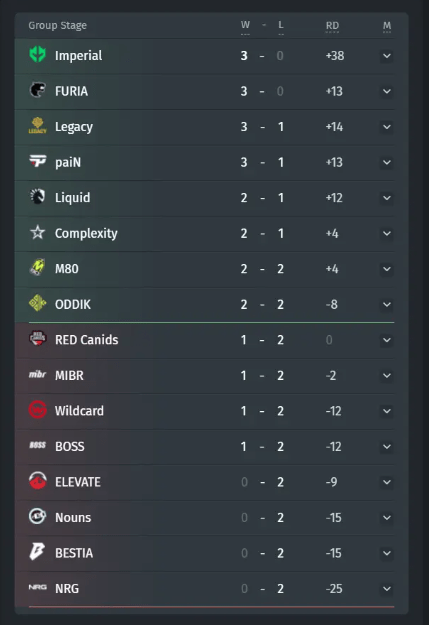The American RMR system as it exists today is a failure. Which option might be preferable?

PGL Major Copenhagen 2024: The American RMR has concluded, marking the end of an intense and competitive championship. As the dust settles, it’s essential to take stock of the tournament, applauding the achievements of those who progressed to the next stage while offering unwavering support to those who fell short. However, the Counter-Strike community finds itself embroiled in a different narrative—one that casts a shadow over Valve’s handling of PGL Major Copenhagen 2024: The American RMR.
Discontentment looms as accusations of mishandling and inadequacy are hurled at Valve, tarnishing the overall experience of the tournament. Enthusiasts and participants alike question why such a revered event has been marred by dissatisfaction. Is it a matter of poor decision-making? Were there technical glitches and organizational blunders? Or are there deeper systemic issues at play? In this article, we delve into the heart of these concerns, examining the various factors that have contributed to the perceived failure of PGL Major Copenhagen 2024: The American RMR. Furthermore, we explore potential remedies and alternative approaches that could rectify the situation, ensuring a more seamless and gratifying experience for future tournaments. It is crucial to address these challenges head-on, for the Counter-Strike community thrives on fair competition, transparency, and the unwavering support of its passionate fanbase. By identifying the root causes and proposing viable solutions, we can work towards preserving the integrity and reputation of future events, fostering an environment where players, organizers, and spectators can all revel in the spirit of esports excellence.
Table of Contents
Basic information
Let us shed further light on the purpose and significance of teams participating in RMR (Regional Major Ranking) qualifications for those who may still be unfamiliar with the intricacies of the process. RMR serves as a crucial pathway for teams aspiring to compete at the highest level in Counter-Strike. When a newly formed team decides to embark on the challenging journey towards the Major, they must begin by registering for the open qualifiers. These qualifiers serve as the entry point, where teams from various backgrounds and skill levels converge to showcase their potential. In the open qualifiers, the competition is fierce, as teams vie for a limited number of spots to advance to the next stage. Only the top four teams emerge victorious from the open qualifiers, earning the right to progress further. It is important to note that the open qualifiers offer no room for error or second chances. Each match carries immense weight, and teams must demonstrate their prowess by consistently outperforming their opponents. Having successfully navigated the open qualifiers, the qualified teams move on to the closed qualifiers. Here, the intensity reaches new heights as 16 teams battle it out for a coveted place in the RMR event. The closed qualifiers represent a significant milestone, as they act as the final gateway to the highly anticipated RMR tournament.
Securing a spot in the RMR is a testament to a team’s skill, dedication, and strategic acumen. It is the culmination of their hard work and serves as validation of their progress in the competitive CS2 scene. The RMR event itself holds tremendous prestige, as it brings together some of the most formidable teams from the region, all vying for a limited number of slots to qualify for the Major. Within the RMR tournament, the stakes are incredibly high. With only five slots available for the Major, the competition among the participating teams intensifies. Every match becomes a battle for survival, as teams employ their tactical prowess, individual skill, and teamwork to outshine their rivals. The RMR event serves as a crucible, where teams must prove their mettle and secure their place among the elite few who will advance to the pinnacle of CS2 competition—the Major. Participation in the RMR qualifications is paramount for teams aspiring to reach the prestigious Major. It is a rigorous journey that demands consistency, resilience, and exceptional gameplay. The RMR system provides a fair and structured platform for teams to showcase their abilities, earn recognition, and ultimately secure a chance to compete on the grandest stage of Counter-Strike.
Comparison of American and European RMR
Let’s further explore the comparison between the European and American RMR tournaments and delve into the implications of the qualification processes. The disparity in the number of qualifying teams between the European and American RMR tournaments raises questions about the overall competitiveness and representation of regions in the CS2 Major. While it is expected that regions differ in their strength and depth of talent, the significant gap in the number of qualifying teams warrants a closer examination. In the European RMR, the Swiss system format allows for flexibility and resilience. Teams have the opportunity to bounce back from early losses and secure their spot in the Major by winning a designated number of matches. This structure emphasizes consistency and rewards teams that can perform under pressure. The inclusion of the European RMR Decider tournament for teams with a 2-3 record further adds an additional chance for redemption and qualification. On the other hand, the American RMR adopts a format devised by Valve, which may have contributed to the lower number of qualifying teams. While the specifics of the format are not outlined in the provided text, it appears that the qualification process for the American region is more challenging, resulting in fewer teams making it to the Major. This discrepancy can be frustrating for teams in the American region who aspire to compete at the highest level.
It is essential to consider various factors that could contribute to the differences in the number of qualifying teams. These factors include the depth of talent in each region, the level of competition, and the resources available for teams to develop and compete. Additionally, the level of investment and infrastructure in esports within each region can play a significant role in shaping the competitive landscape. Addressing the imbalance in representation requires a comprehensive evaluation of the qualification processes across regions. It is crucial to strike a balance that ensures fair opportunities for teams from different regions to earn their place in the Major. This may involve revisiting the formats, adjusting the allocation of slots, or implementing regional adjustments to account for variations in competitiveness. Furthermore, fostering stronger regional development programs and nurturing talent at the grassroots level can contribute to creating a more level playing field. Investments in infrastructure, player development, and support systems can help regions bridge the gap and enhance their competitive standing. Ultimately, the goal should be to create a global esports ecosystem that values diversity and provides equal opportunities for teams from all regions to showcase their skills and compete at the highest level. Achieving this requires continuous dialogue, collaboration, and refinement of the qualification processes to ensure a fair and representative Major tournament. The contrasting numbers of qualifying teams between the European and American RMR tournaments highlight the need for a comprehensive evaluation of the qualification processes. Striving for a more balanced representation across regions and fostering the growth of esports worldwide will contribute to the continued development and success of Counter-Strike 2 as a global phenomenon.
What is the main problem?
Comparing the European and American regions can be seen as a futile exercise since they are fundamentally different in terms of strength. However, reducing the slots by three times solely due to this difference seems questionable. So, what exactly is the problem? Teams with a 2-2 score didn’t progress to the Major either. Why didn’t they play a fifth match or have a Deciders bracket? We are unlikely to receive an answer to this question as Valve seemingly made the decision that way. One of the teams affected by this was Team Liquid. Let’s examine the PGL Major Copenhagen 2024: American RMR system using their example. In their first match against BESTIA, Team Liquid successfully won on the Inferno map. However, they lost to Furia on Mirage. At this point, the score was tied at 1-1, and it was expected that a BO3 series would determine the outcome. As one would expect, the first BO3 match saw Team Liquid triumph against BOSS. However, they subsequently lost to Complexity with a score of 1-2, eliminating them from the tournament. One of the top teams in North America exited the tournament with a 2-2 score and failed to qualify for the Major. The reason behind this outcome is the significantly limited number of slots allocated to the American region for the Major. It is due to this peculiar system that Team Liquid, one of the best teams from North America, will miss such a significant tournament for the first time since 2017.
Essentially, the importance of two BO1 matches is being equated to that of two BO3 matches. This is not the Swiss system that was used in all the other RMR tournaments this year. It appears to be a new scheme devised by Valve, which has not been previously employed in the professional scene. The decision by Valve to implement this new format raises concerns about fairness and the representation of teams from different regions. While it is understandable that regions have varying strengths, it is crucial to ensure that the qualification processes provide equal opportunities for teams to showcase their skills and compete at the Major. The discrepancy in the number of qualifying teams between the European and American RMR tournaments highlights the need for a more comprehensive evaluation of the qualification processes. It is essential to strike a balance that considers the competitive landscape of each region while ensuring fair representation and opportunities for teams. To address these concerns, ongoing discussions and collaboration between tournament organizers, teams, and Valve are necessary. Revisiting and refining the qualification formats, considering regional adjustments, and promoting stronger regional development programs can contribute to a more inclusive and competitive CS2 ecosystem. The differences in the qualification processes and the number of slots allocated to the European and American RMR tournaments have sparked discussions about fairness and representation. It is important to strive for a system that provides equal opportunities for teams from different regions to compete at the highest level and foster the growth of CS2 as a global esport phenomenon. Continued dialogue and refinement of the qualification processes are essential to achieving these goals.
And here’s what the full PGL Major Copenhagen 2024: American RMR bracket looks like:
What are the options for solving this problem?
Actually, it’s quite simple. The key is to distribute the number of slots properly among the regions. Currently, the situation is as follows:
- American RMR – 5 teams
- European RMR – 17 teams
- Asian RMR – 2 teams
In the upcoming Counter-Strike 2 Major, a total of 24 teams will be participating. It would be beneficial to consider adjusting the slot allocation for the RMR tournaments as follows:
- American RMR – 7 teams
- European RMR – 13 teams
- Asian RMR – 4 teams
This would create a more logical balance at the tournament. Additionally, implementing a consistent Swiss system for all RMR tournaments would be beneficial. However, it is crucial that all teams from different regions play under the same set of rules.
Conclusion
The year 2024 has been a complete failure for the American RMR. Many truly deserving teams have been left out. Unfortunately, nothing can be changed now, but it is important to convey our position to Valve that the American region should not be treated so poorly.
Let’s not forget that the PGL Major Copenhagen 2024 is set to begin on March 17th, with the final day scheduled for March 31st. The total prize pool amounts to $1,250,000.





